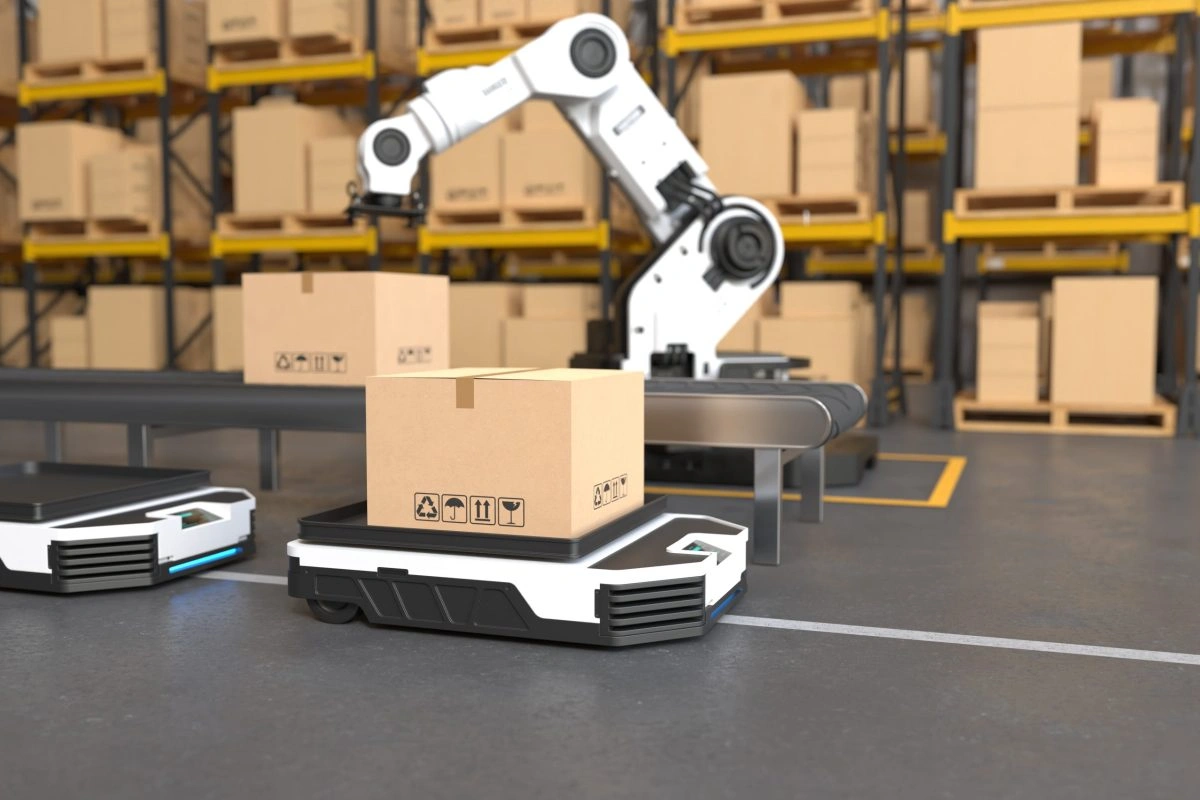In today’s fast-paced and highly competitive business landscape, efficient inventory control plays a pivotal role in the success of any warehousing operation. The ability to accurately manage inventory levels, minimize stockouts, and optimize storage space can significantly impact a company’s bottom line. Traditional methods of inventory control, such as manual tracking or Excel-based systems, often fall short in meeting the demands of modern warehousing.
Introduction to Smart Warehousing
Smart warehousing, also known as intelligent warehousing, is the next evolutionary step in inventory control. It leverages advanced technologies, such as Artificial Intelligence (AI), to automate and optimize various aspects of inventory management. By harnessing the power of AI algorithms, warehouses can streamline their operations, reduce costs, and enhance overall efficiency.
The Role of AI in Warehousing
AI, a branch of computer science, enables machines to simulate human intelligence and perform tasks that traditionally required human intervention. In the context of warehousing, AI systems can analyse vast amounts of data, make intelligent decisions, and learn from past experiences. This capability makes AI an invaluable tool for optimizing inventory control.
Challenges in Warehousing
- Inaccuracy and Inefficiency in inventory management.
- Less Inventory control, risk of overstocks and out-of-stocks, and no customer satisfaction.
- Decentralised decision-making and order fulfilment.
- Under optimization of space utilization and warehouse layout planning leads to inefficient cost management.
- Unable to process demand forecasting and planning align inventory levels with customer demands.
Benefits of Smart Warehousing with AI
Implementing AI in inventory control brings forth a plethora of benefits for warehouses seeking to optimize their operations. In this section, we will explore the advantages of smart warehousing with AI, highlighting how it enhances accuracy, reduces overstocks and out-of-stocks, enables real-time inventory tracking and visibility, optimizes space utilization and warehouse layout planning, improves demand forecasting and planning, and minimizes human error and costs.
- Enhanced Accuracy and Efficiency in Inventory Management
One of the primary benefits of smart warehousing with AI is the enhanced accuracy and efficiency in inventory management. AI algorithms can process vast amounts of data quickly and accurately, enabling precise inventory tracking and reducing the risk of human errors. By automating inventory control processes, warehouses can eliminate manual counting and data entry, resulting in improved accuracy and efficiency.
- Reduction in Overstocks and Out-of-Stocks
AI-driven inventory control systems excel at demand forecasting, allowing warehouses to optimize stock levels and minimize overstocks and out-of-stocks. By analysing historical data, customer trends, and market conditions, AI algorithms can accurately predict demand patterns and adjust inventory levels accordingly. This reduction in overstocks and out-of-stocks leads to improved customer satisfaction, increased sales, and reduced carrying costs.
- Real-time Inventory Tracking and Visibility
Another significant advantage of AI in smart warehousing is real-time inventory tracking and visibility. AI systems can provide warehouse managers with up-to-date information on inventory levels, location, and movement. This real-time visibility enables warehouses to make informed decisions regarding stock allocation, order fulfilment, and replenishment. Warehouse managers can easily identify potential stockouts, monitor inventory movements, and ensure optimal stock positioning.
- Optimal Space Utilization and Warehouse Layout Planning
AI can optimize space utilization and warehouse layout planning, maximizing the use of available storage capacity. By analysing inventory data, sales patterns, and storage requirements, AI algorithms can suggest the most efficient placement of goods within the warehouse. This optimization minimizes wasted space, reduces travel distances, and improves overall warehouse efficiency. Furthermore, AI can help warehouses plan for future growth by predicting space requirements based on demand forecasts.
- Improved Demand Forecasting and Planning
Accurate demand forecasting is crucial for effective inventory control, and AI excels in this area. By analysing historical sales data, market trends, and external factors, AI algorithms can generate accurate demand forecasts. This enables warehouses to plan inventory levels, allocate resources, and optimize order fulfillment processes. With improved demand forecasting and planning, warehouses can align their inventory levels with customer demand, resulting in improved customer satisfaction and reduced costs.
- Minimized Human Error and Cost Savings
AI-driven inventory control systems minimize human error, leading to cost savings for warehouses. Manual inventory management and data entry are prone to errors, which can result in stockouts, overstocks, and increased costs. By automating these processes, AI reduces the risk of human error and ensures data accuracy. This accuracy leads to more efficient order processing, reduced carrying costs, and improved overall profitability.
Implementing AI in Smart Warehousing
Implementing AI in inventory control is a transformative process that requires careful planning and execution. In this section, we will outline the necessary steps for successfully integrating AI into warehouse operations. We will discuss how to assess warehouse infrastructure and technology readiness, choose the right AI-based inventory control solution, integrate AI with existing Warehouse Management Systems (WMS), and train and test AI algorithms for inventory control.
Assessing Warehouse Infrastructure and Technology Readiness
Before implementing AI in inventory control, it is crucial to assess the current infrastructure and technology capabilities of the warehouse. This assessment involves evaluating the availability and reliability of network connectivity, hardware resources, and software systems. It is essential to ensure that the warehouse has the necessary infrastructure to support AI applications, such as robust Wi-Fi networks, servers, and storage capacity.
Choosing the Right AI-based Inventory Control Solution
Selecting the right AI-based inventory control solution is a critical decision that can significantly impact the success of the implementation. It is essential to consider factors such as the warehouse’s specific requirements, scalability, ease of integration with existing systems, and vendor reputation. The chosen solution should provide advanced analytics capabilities, real-time data synchronization, demand forecasting algorithms, and inventory optimization features.
Integration of AI with Existing Warehouse Management Systems (WMS)
To leverage the benefits of AI in inventory control, seamless integration with existing Warehouse Management Systems (WMS) is necessary. The WMS serves as the central hub for managing warehouse operations, including inventory management, order processing, and fulfilment. The integration should enable the AI system to access real-time data from the WMS, such as inventory levels, order information, and customer data. This integration ensures that the AI algorithms have accurate and up-to-date information for making informed decisions.
Training and Testing AI Algorithms for Inventory Control
Once the AI-based inventory control solution is integrated with the warehouse’s systems, it is crucial to train and test the AI algorithms to ensure optimal performance. This training involves feeding historical data into the AI system, allowing it to learn patterns, forecast demand, and optimize inventory levels. The AI algorithms should be continuously tested and refined to ensure accuracy and adaptability to changing market conditions.
Conclusion and Key Takeaways
In conclusion, smart warehousing by optimizing inventory control with AI presents a game-changing opportunity for warehouses to enhance accuracy, efficiency, and overall profitability. By harnessing the power of AI algorithms, warehouses can transform their inventory management processes, reduce costs, improve customer satisfaction, and gain a competitive edge in the market. Embracing AI-driven inventory control is not just a choice but a necessity in today’s fast-paced and dynamic business environment.




